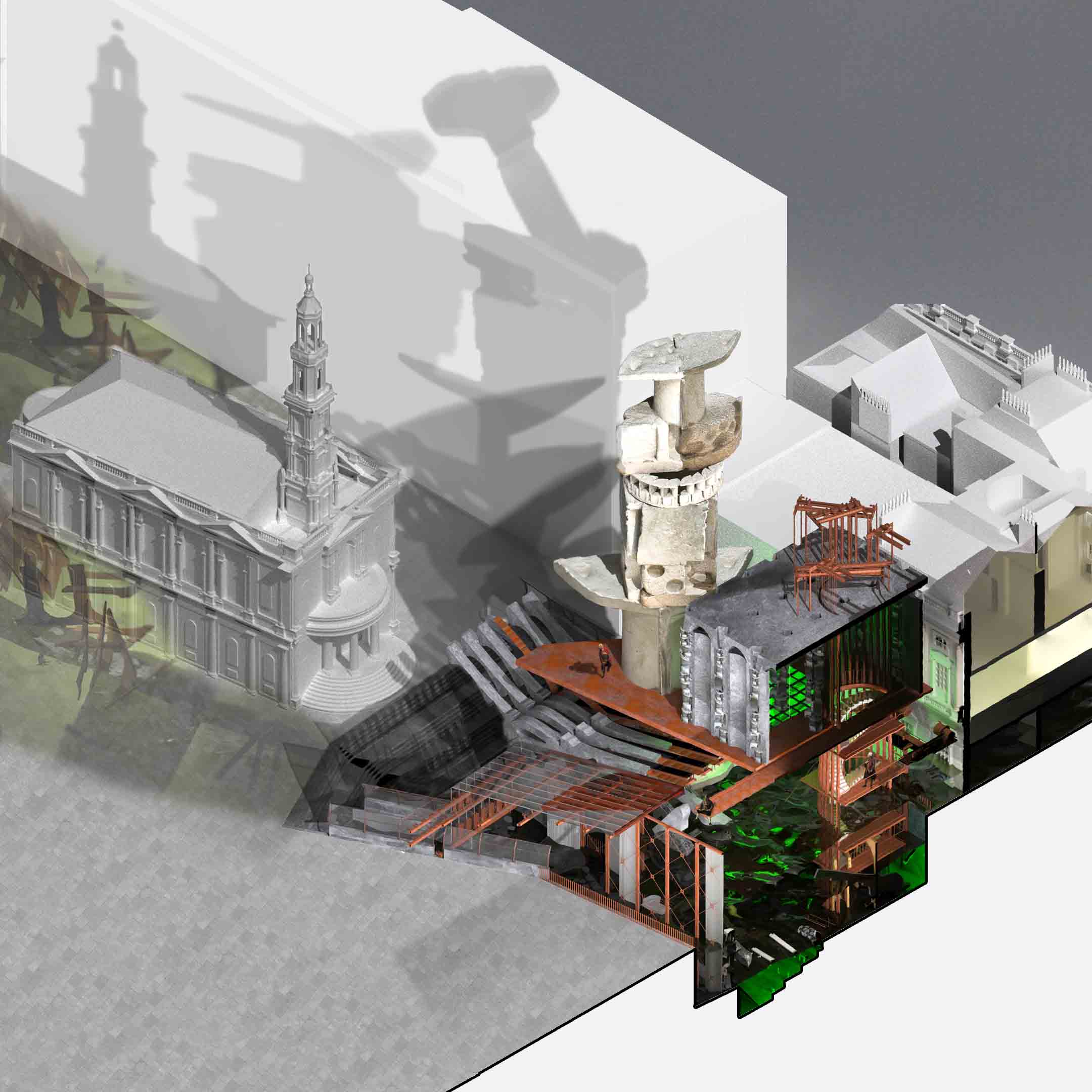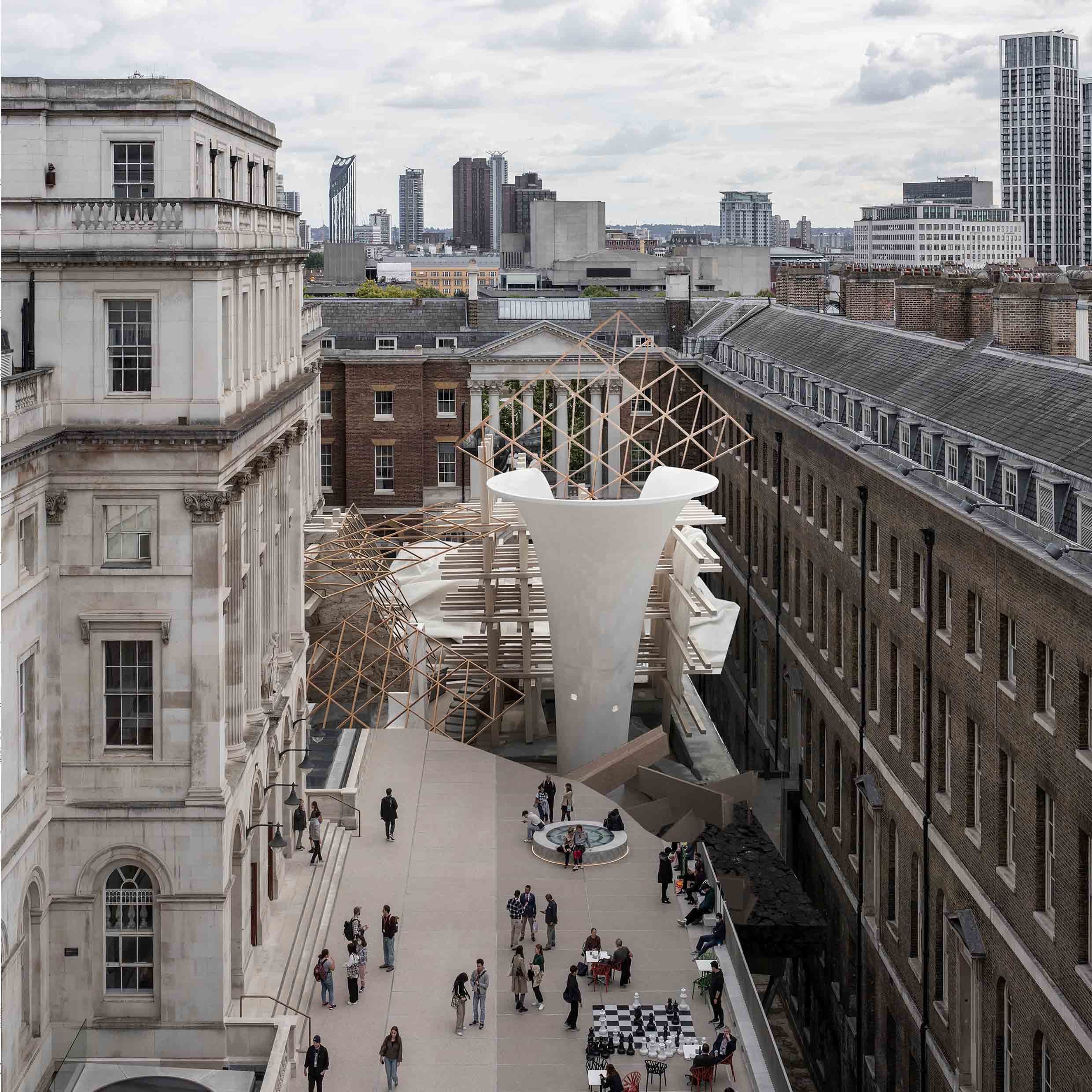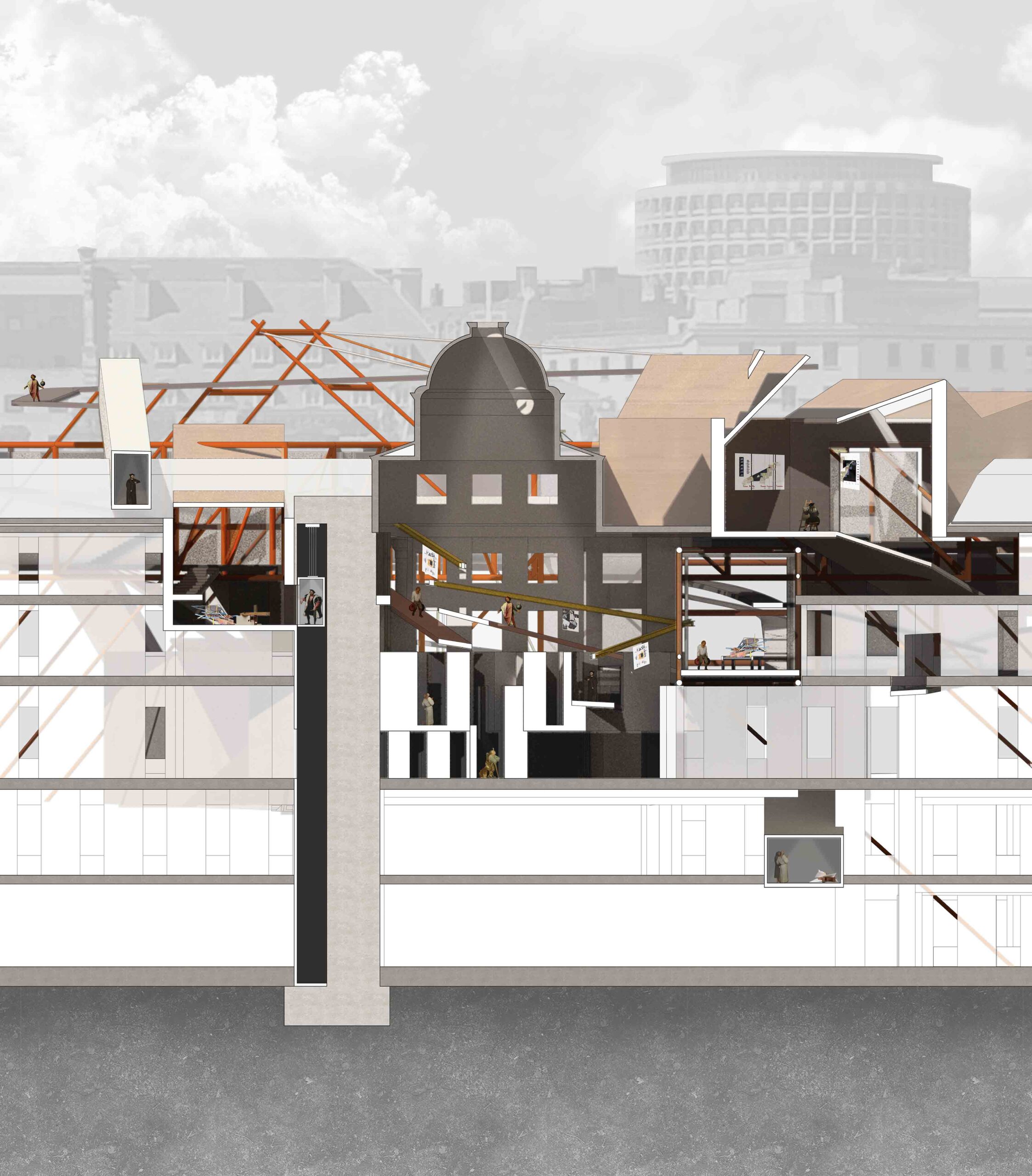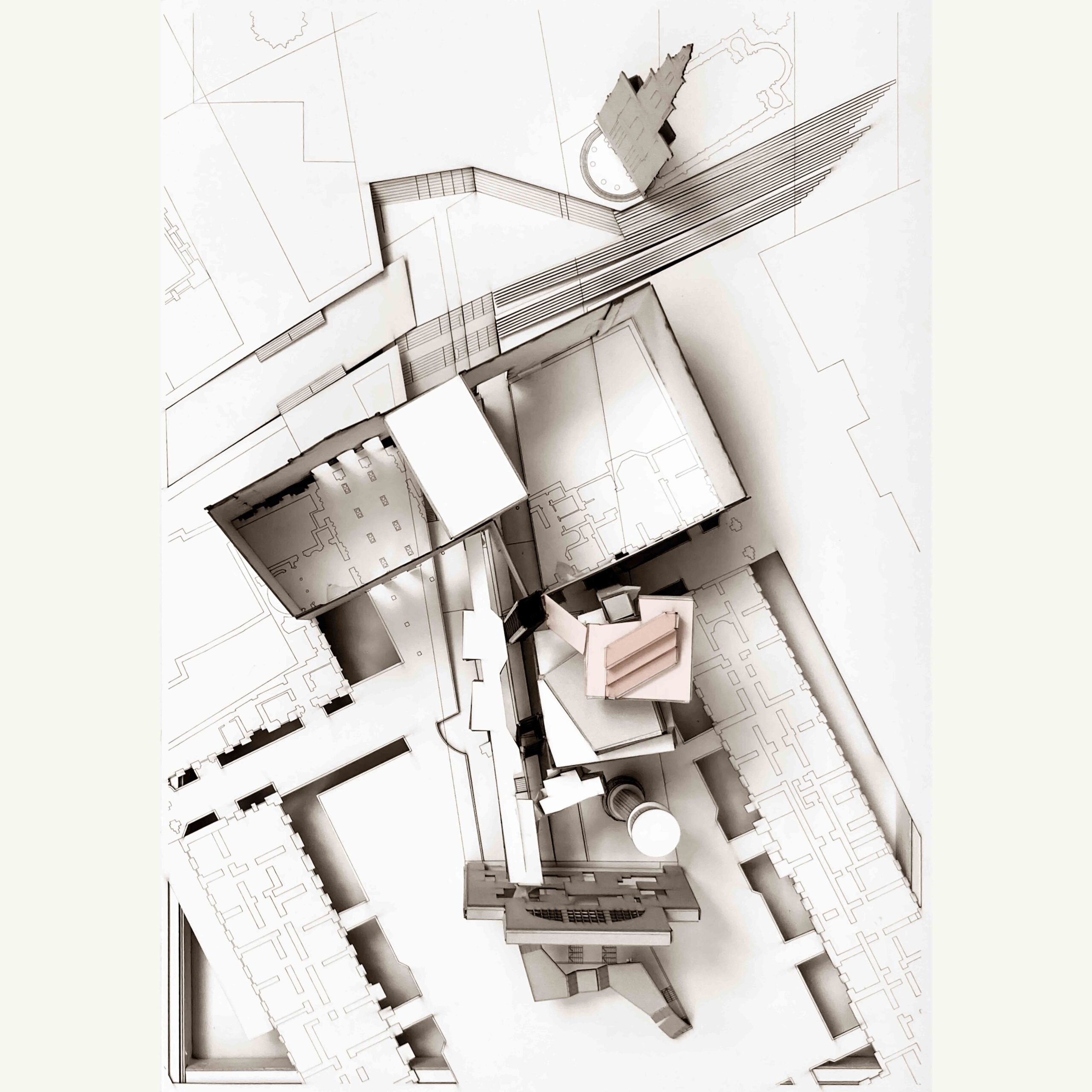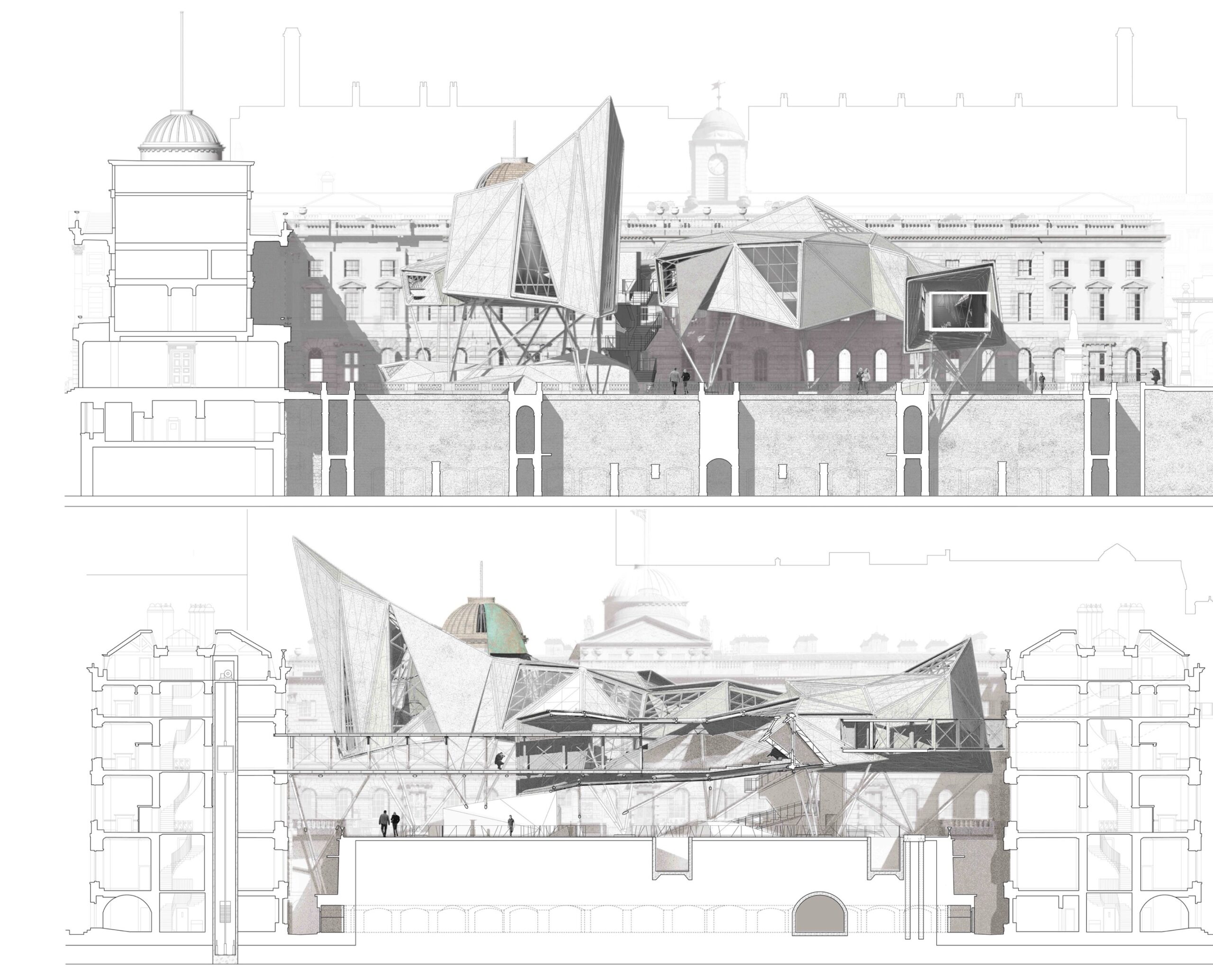Design Studio (Three) Three BA Architecture
Constance Lau & Stephen Harty
Constance Lau is an architect and teaches undergraduate to doctorate level at Westminster and the National University of Singapore (NUS). Using techniques of montage and notions of dialectical allegory, she explores her research interests in multiple interpretations and narratives. Narrative as an ongoing dialogue in architectural design is further articulated through publications, in particular Dialogical Designs (2016).
Stephen Harty is a practicing architect and director of Harty and Harty, an agency that specialises in arts sector projects including galleries and artists’ studios. He studied at The Mackintosh School of Architecture, Glasgow School of Art, The Bartlett and the AA.
DS3.3: The City as an Asynchronous Archive
Students: Tala Alomar, Joud Banna, Alejandra Bustamante Guerra, Nathan Cheung, Sidorela Draga, Kieran Edgecock, Kristiana Gulbe, Husni Hussein, Sedef Karayel, Breno Lourenco, Maisie Paterson, Maciej Przasnyski, Rania Saidi, Leonardo Silva Ritter, Alexandra Sturza, Mai Tian, Changsoo Yoo, Lal Yoruk
The contributions of the creative user to design discussions and the idea of a ‘questioning and incomplete’ approach is fundamental to the process-driven methodology of this studio. Students are encouraged to assume authorship and shape the reading and outcome of the design brief. Referencing readings of Walter Benjamin and Aldo Rossi, notions of historiography underpin techniques to research, construct and organise seemingly random fragments of material. Discussions of dialectical history maintain that the acquisition of knowledge is neither linear nor seamless, and the ensuing experiences in the City as an Asynchronous Archive are not meant to be singular and continuous but fragmented and juxtaposed.
Architecture as Archive and Archive as Architecture
Authorship through personal interpretations of archival material and the ensuing dialogues will establish the basis of design proposals that depict asynchronous archives as both material and experiential. Assumptions of architecture as a static and complete entity are questioned through the processes of archival research. Architectural drawings as historical markers and catalysts for transformation are employed to interpret buildings and spatially reinterpret research material. The site of Somerset House formed part of design discussions, with drawings being used as a means to mediate and reinterpret research and design processes through issues of context, site and site specificity. The new narratives serve to confront, place and integrate chronological shifts that initiate multiple interpretations. Consequently, events and knowledge depicted in the drawings that would otherwise be consigned to memory or totally forgotten are retold and given new readings and meanings that are relevant to the present context and site.
The Asynchronous Archive of Alternative Histories
The recording and recounting of history are not linear processes. All views expressed are interpretations of selected research material. The proposed architecture presents alternative histories through new interpretations based on the underlying argument that ‘there is always a history of drawings, objects and buildings within and against which an architectural work can be seen’. This also includes the infinite opportunities for the work of architecture to be completed by the user through habitation and use. Authorship and the practice of archival research are further explored through issues of provenance and acquisition, conservation and preservation, control and presentation of the subject matter, as well as site-specificity and displacement. The work celebrates the asynchronous disjunctions between tactile experiences of a tangible site, and allegorical and historical narratives from archival material, which when juxtaposed conjure meaningful and individual experiences through active user participation.
Guest Critics: To team alumni: Neophytos Christou, Irgel Enkhsaikhan, Silvia Galofaro, Jan Macbean and Nada Maktari. Your time with the studio is much appreciated. And to Paolo Zaide for all the supportive impromptu guest appearances.
Special Thanks: To Giorgos Christofi, critic and assistant tutor. Thank you for your time, encouragement and dedication to the practice of design teaching.










